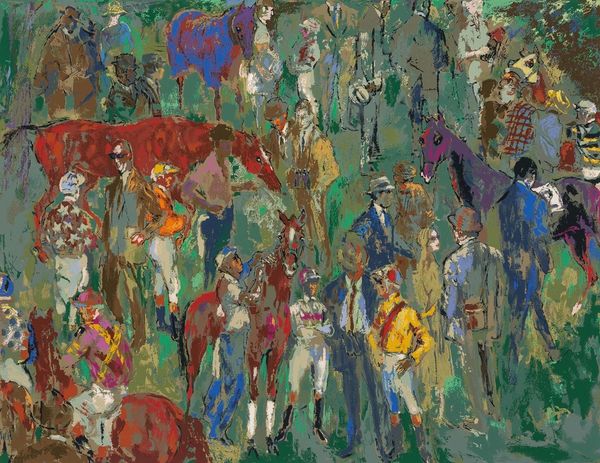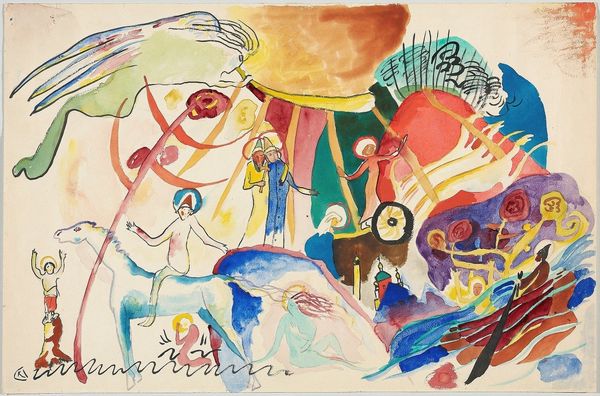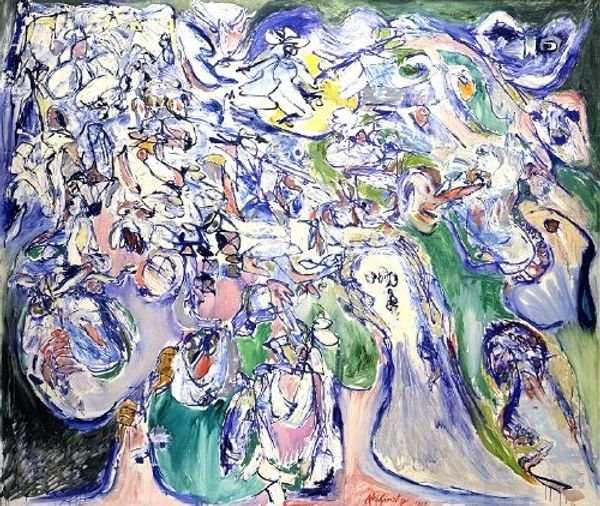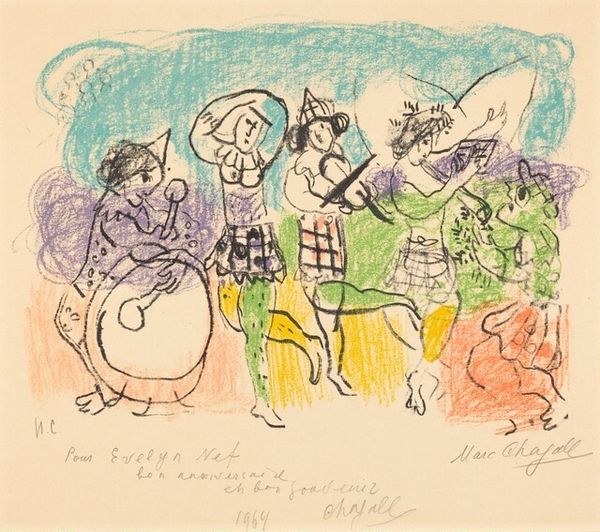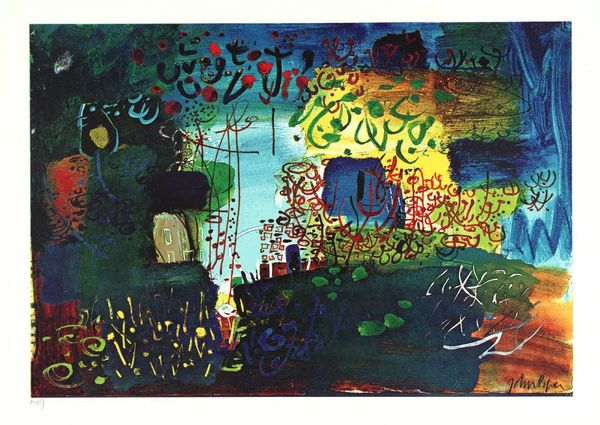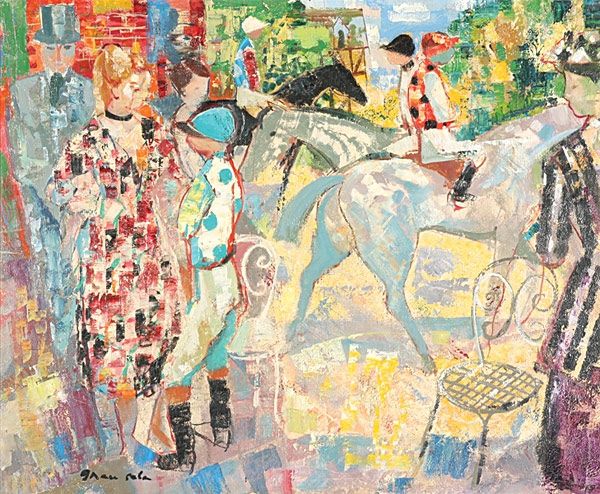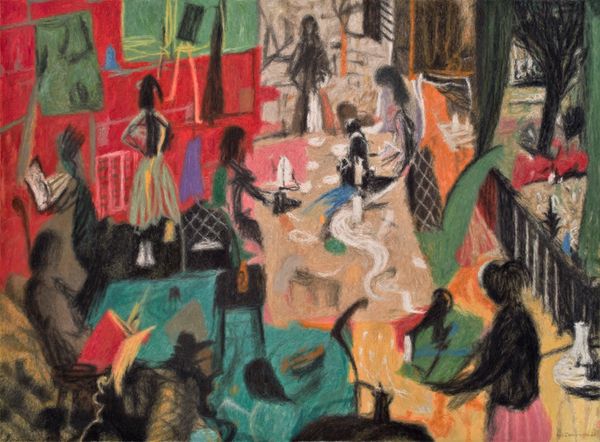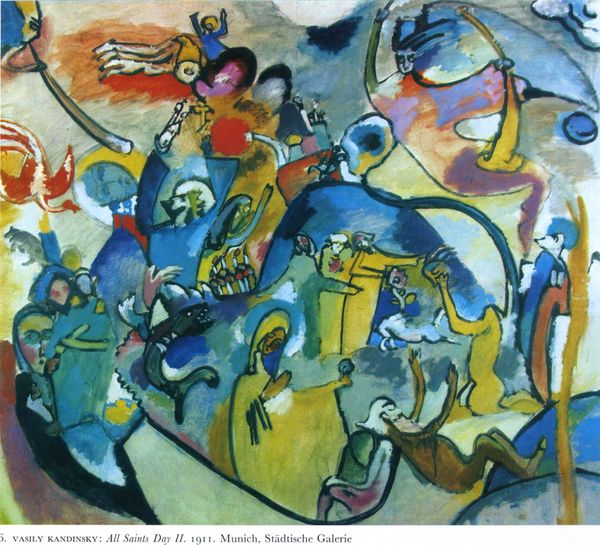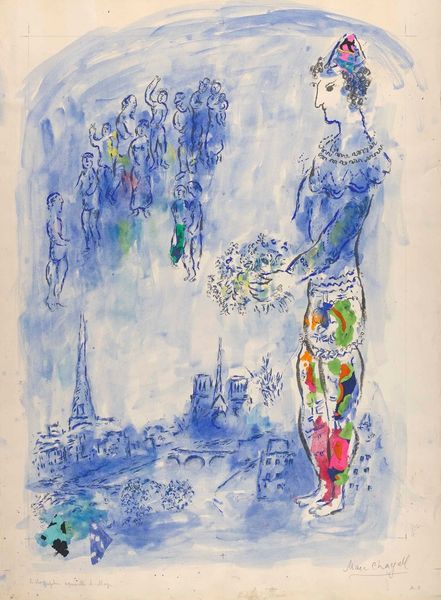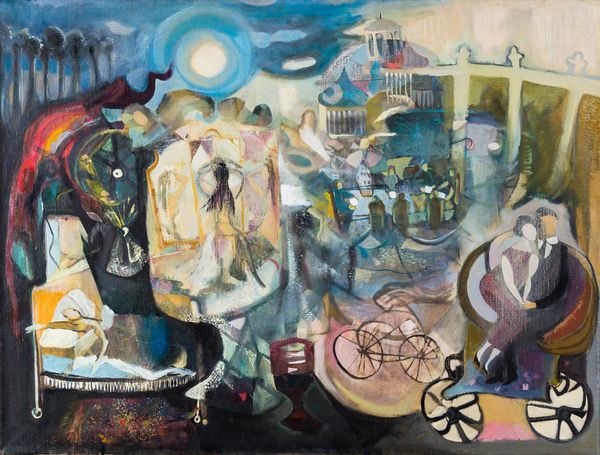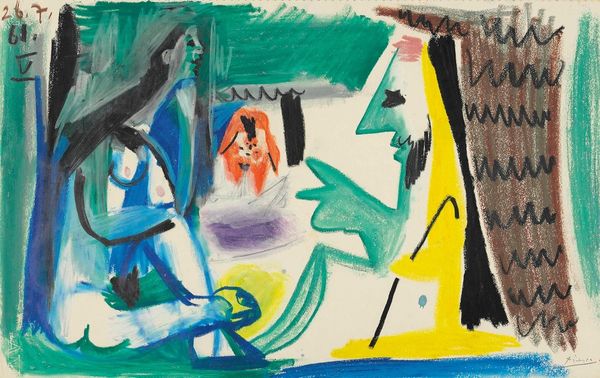
Dimensions: sheet: 56.2 × 76.52 cm (22 1/8 × 30 1/8 in.)
Copyright: National Gallery of Art: CC0 1.0
Editor: This is "Longchamps," a painting done between 1923 and 1928 by Raoul Dufy, using watercolor and painting. It feels so lively! The green and blues create this vibrant outdoor scene, and it seems as though he layered thin paint, in places, over pencil or ink. How would you interpret Dufy’s approach? Curator: His approach strikes me as one deeply invested in the materiality of painting. Consider how Dufy's application of pigment foregrounds the very act of seeing. Note the translucent washes that don't merely represent form, but invite our gaze to wander across the surface, engaging with the chromatic interplay between the greens and blues. The drawing underneath peeks through. Editor: I notice the figures almost blend into the landscape, but then are contrasted through those bolder colors he adds. What about the composition itself? Curator: Yes, observe how Dufy creates a visual rhythm through the repetition of form – the upright figures mirroring the verticality of the trees, for example. Furthermore, contemplate how this interplay evokes a semiotic dance. Dufy does not present a mere representation but offers an intellectual field of aesthetic relationships for our cognitive processing. Is it resolved or harmonious in a traditional sense? I don't see it as particularly resolved. Editor: It’s less about realism and more about… the feeling of being there. Almost like capturing an emotion, a moment. Curator: Precisely. We could propose that Dufy aims for an encapsulation of sensations. The loose brushwork suggests a capturing of light and atmosphere rather than strict representational accuracy, creating its affect. Through a kind of aesthetic abstraction and fragmentation, Dufy engages in what you could see as the theater of subjective vision, a theme echoing the post-Impressionists. Editor: I'm starting to see the work as more than just a pretty picture, considering its engagement with semiotics! Thanks for sharing your insights. Curator: Indeed, a deep reading, focusing on form, helps illuminate meaning and artistic intention. It is ever the case that by carefully observing structure we enrich understanding.
Comments
No comments
Be the first to comment and join the conversation on the ultimate creative platform.
